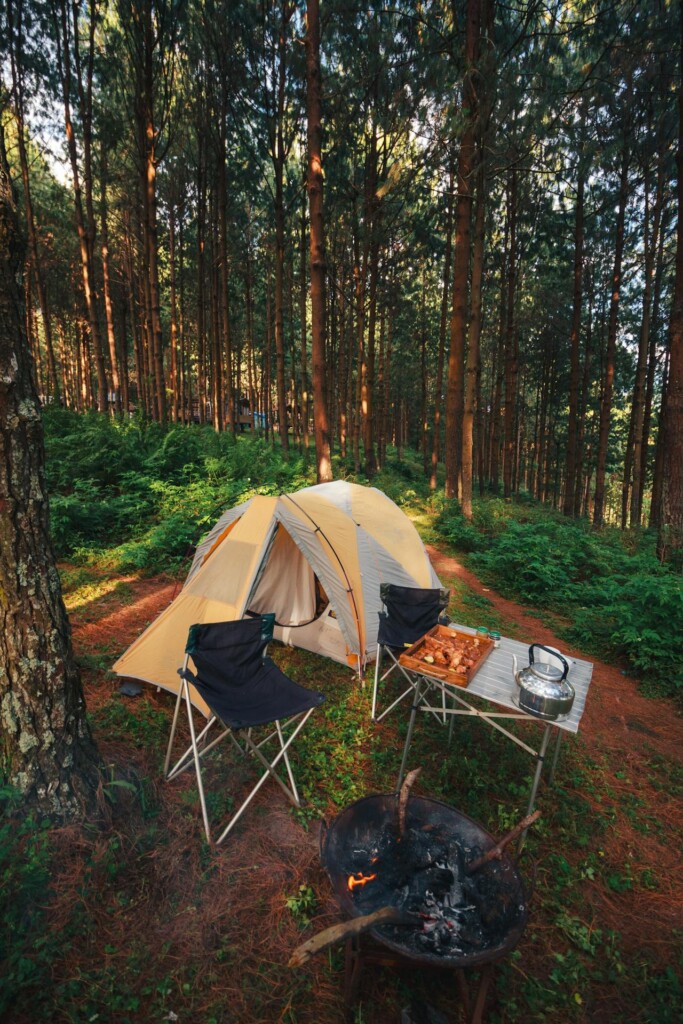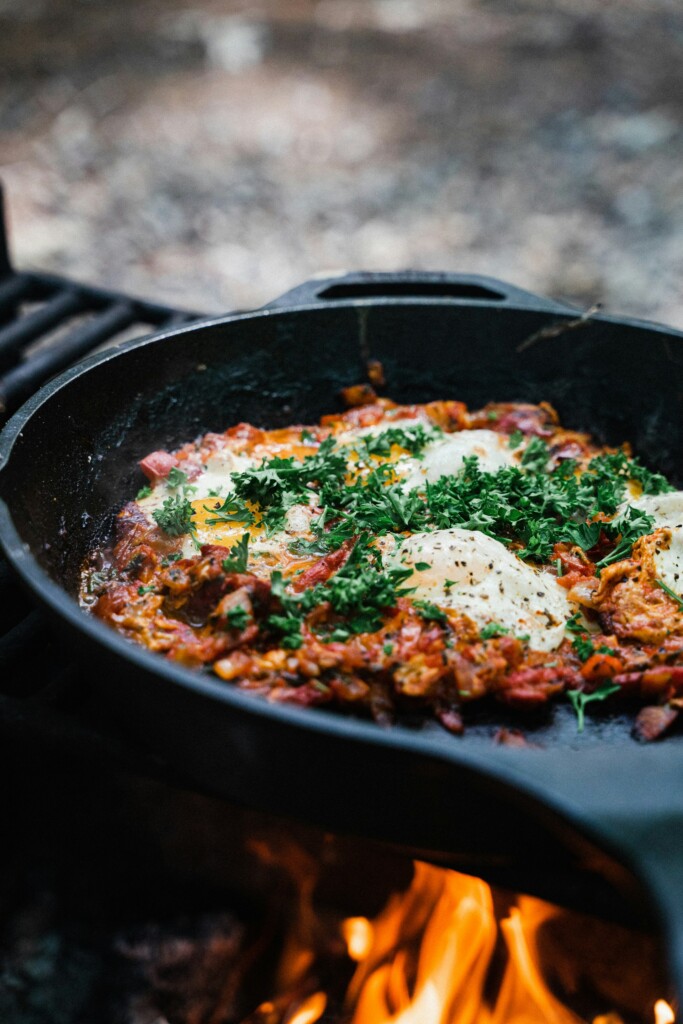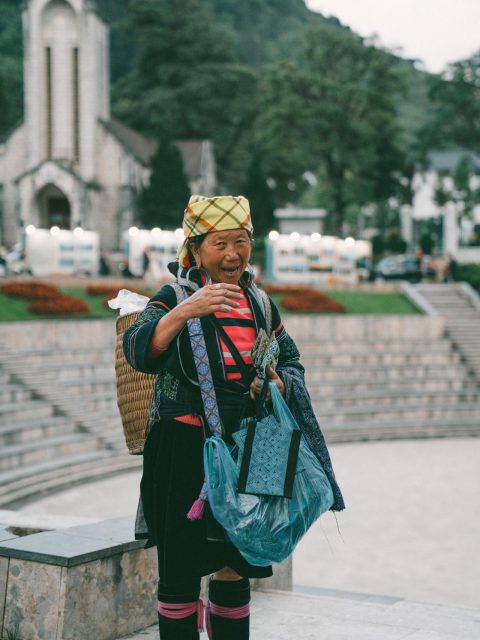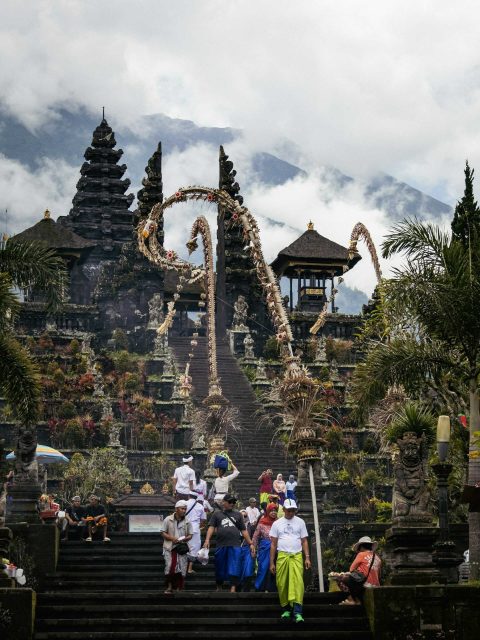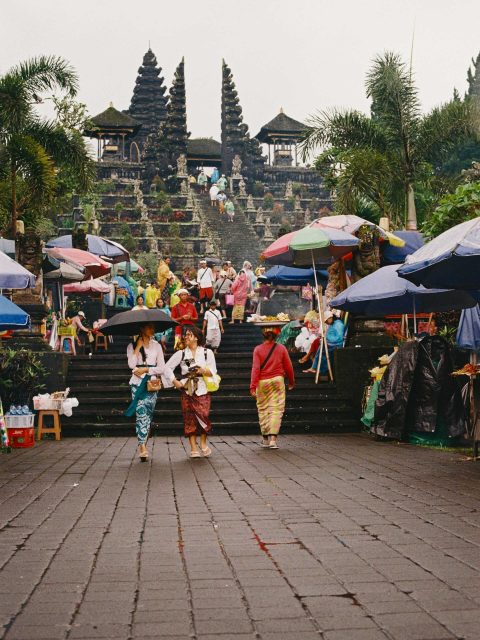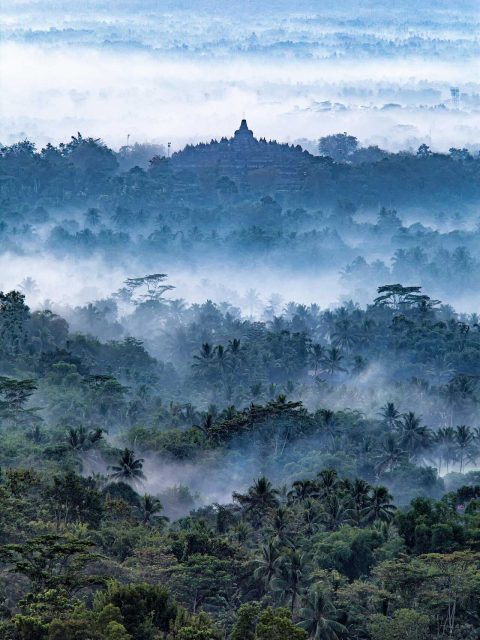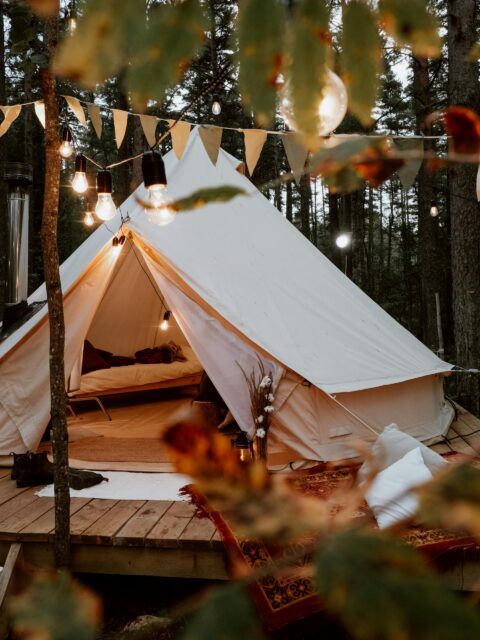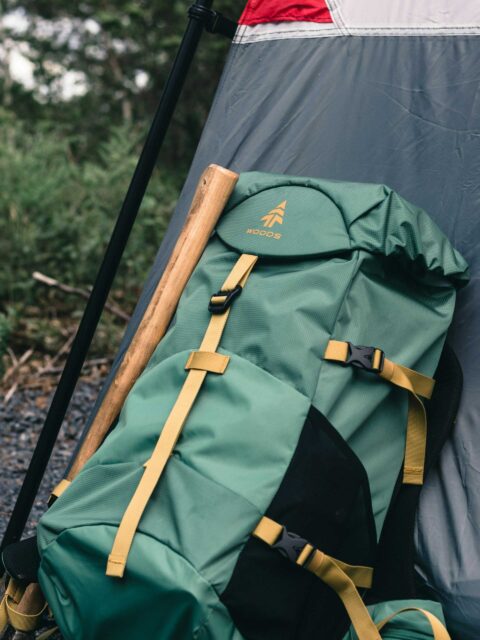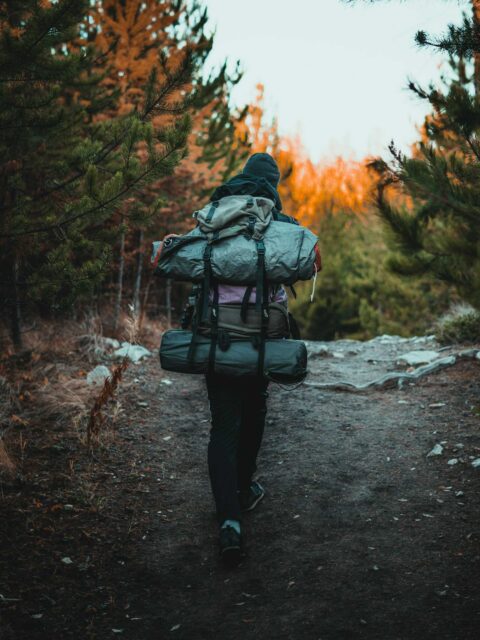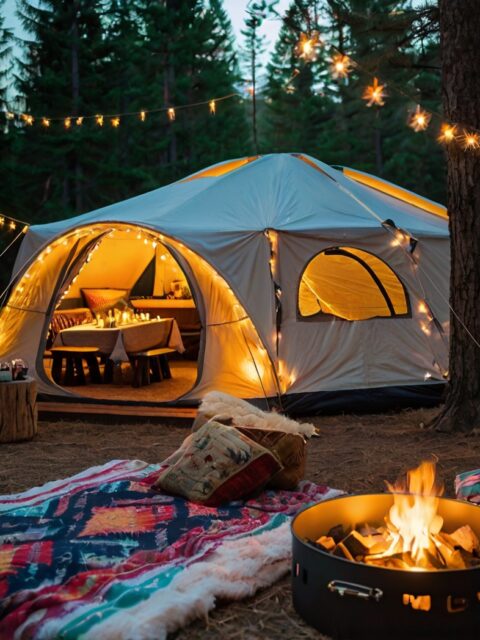The Ultimate Camping Guide for Beginners: Tips, Packing List & Survival Hacks
Thinking about going camping for the first time but don’t know where to start? Don’t worry! This camping guide for beginners will walk you through everything you need to know to have a safe, fun, and stress-free camping trip. From choosing the right campsite to packing essential gear and cooking delicious meals, we’ve got you covered. Whether you’re camping with friends, family, or solo, this guide will help you prepare like a pro. Let’s get started!
Chapters
A Beginner’s Guide to Camping
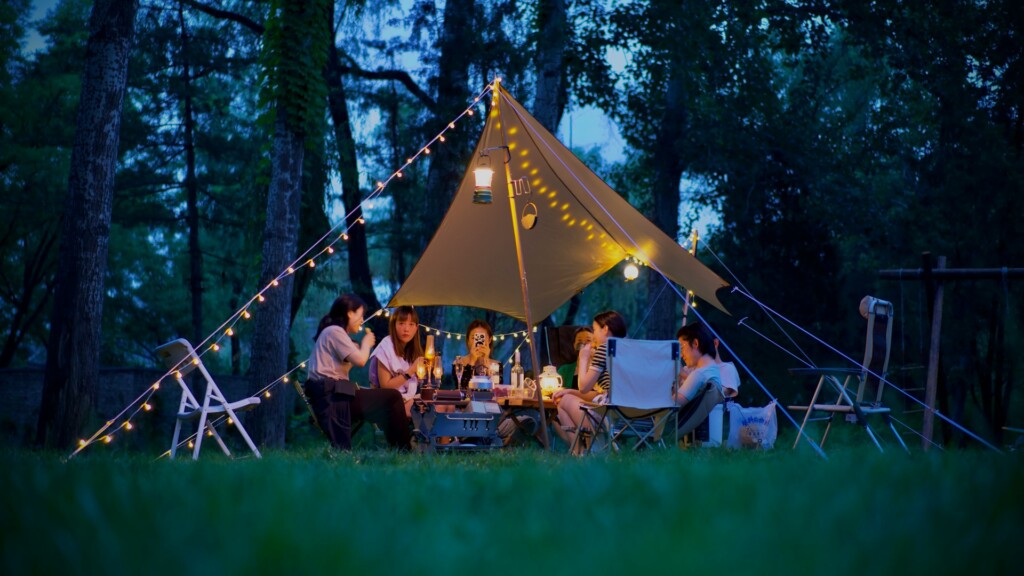
Read more: Tips for planning a stress-free last-minute camping trip.
Please note: this post may contain affiliate links. If you purchase something by clicking the links, I will get a small compensation, at no extra cost to you.
Types of Camping
Not all camping trips are the same! Some people love the idea of waking up in the middle of the forest with no one around, while others prefer a cozy cabin with running water. If you’re new to camping, here are the four main types and how to choose the best one for you.
1. Campground Camping
Want to camp but not ready to give up modern comforts? Campground camping is the easiest and safest way to start.
✔️ Bathrooms & Showers – No need to “go in the woods.”
✔️ Fire Pits & Picnic Tables – Great for cooking and hanging out.
✔️ Safe & Family-Friendly – Perfect for kids or first-time campers.
Most campgrounds are located in National Parks, State Parks, or private campgrounds, and you can reserve a spot online.
2. Boondocking
If you dream of camping under the stars with no neighbors, boondocking is your perfect adventure.
✔️ Total freedom – Pick your own spot on public lands, no reservations required.
✔️ Pure nature vibes – No crowded campgrounds, noisy RVs, or shared bathrooms.
✔️ Completely free – Save your cash, no campsite fees here!
But here’s what you need to know:
❌ No amenities – No bathrooms, water, or fire pits – bring everything you need.
❌ Know the rules – Not all spots allow boondocking; check BLM land or national forest regulations first.
3. Glamping: Love Nature but Hate Roughing It? ✨🏡
Want to enjoy the great outdoors without sleeping on the ground? Glamping (short for “glamorous camping”) is all about comfort.
✔️ Pre-set luxury tents, yurts, or cabins – No setup needed!
✔️ Real beds, heating, and even private bathrooms – Sleep in style.
✔️ Great for couples, families, or special occasions – Think romantic getaways or birthday trips.
Glamping spots can be found worldwide, from treehouses in the mountains to safari tents by the beach.
Read more: Want a luxury camping trip? See the ultimate glamping packing list
4. RV Camping
If you love road trips, RV camping lets you explore new places while bringing all the comforts of home.
✔️ Beds, a kitchen, and even A/C – No sleeping bags required.
✔️ Easy all-weather camping – Rain or shine, you’re covered.
✔️ Great for long-distance travel – Visit multiple destinations in one trip.
But keep in mind:
❌ RV parks can get pricey – Some charge $30–$80 per night.
Choosing a Location for Your First Camping Trip
Selecting the right campsite is essential for a smooth and enjoyable first camping experience. If you’re new to camping, starting with a developed campsite is the best choice. State parks and privately run car campgrounds offer beginner-friendly environments where you can simply drive up, park, and set up your tent with minimal hassle.
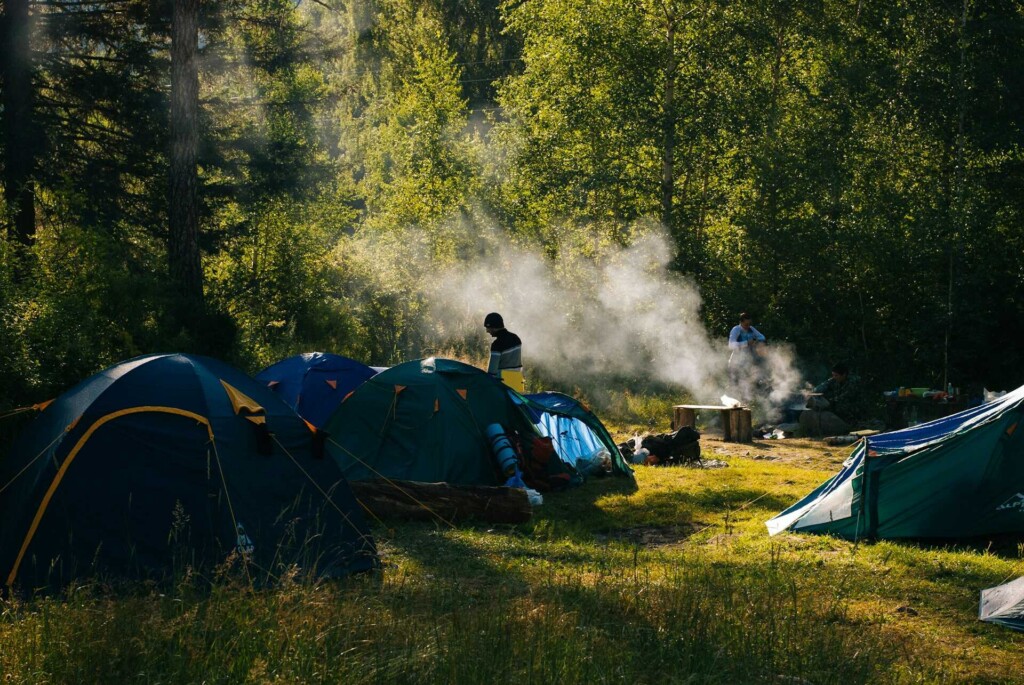
Before booking, take some time to check if the campsite has basic amenities such as toilets, showers, a BBQ grill, and access to clean water—these small conveniences can make a big difference. As a first-time camper, you already have plenty to learn, from pitching a tent to preparing meals outdoors, so having essential facilities available will help ease you into the experience. Fortunately, most camping websites provide detailed information about campsite amenities, making it easy to find a suitable spot.
Booking in advance is highly recommended, especially during peak seasons. Reserving a campsite ensures you have access to a parking spot, a fire pit, a picnic table, and shared bathrooms, allowing for a more comfortable stay. Websites like Recreation.gov offer options for reserving spots in national parks and public lands, while Hipcamp is a great resource for unique private camping experiences, including stays on farms and vineyards.
When choosing a location, think about what activities you want to do. Whether you prefer hiking, fishing, or simply relaxing by the fire, selecting a campsite that aligns with your interests will enhance your trip.
For convenience, many first-time campers opt for locations within 100 miles of home, reducing travel time and simplifying logistics. However, if you’re feeling adventurous, national forests, RV parks, and cultural hotspots offer exciting opportunities to explore new places.
Read more: Find free camping spots in the USA.
First-Time Campers Checklist by Camping Style
Camping isn’t a one-size-fits-all experience, and neither is your packing list. The gear you need depends on the type of camping you choose whether it’s a comfortable campground stay, a rugged backcountry adventure, a luxurious glamping trip, or an RV getaway.
To make packing easier, we’ve created customized checklists for each camping style. This way, you can focus on the essentials and avoid overpacking while ensuring you have everything needed for a smooth and enjoyable trip.
🏕️ Tent Camping Essentials for Beginners
☐ Camping tent, tent stakes & poles
☐ Hiking backpack
☐ Sleeping bag
☐ Sleeping pad
☐ Camping pillow
☐ Camping lanterns or flashlights (battery- & propane-powered)
☐ Camp chairs & camping table (if none at campsite)
☐ Flashlight
🍳 Cooking & Eating Gear
☐ Camping stove or grill, fuel & matches
☐ Towel
☐ Camp sink
☐ Camping food, drinks, seasonings & oil (for the number of days camping)
☐ Drinks
☐ Cookware
☐ Cooler & ice, or packable ice packs
☐ Water bottle, jugs, or tumblers
☐ Plates, bowls & utensils (crack-resistant, paper, or reusable plastic)
☐ Cooking utensils
☐ Can opener & bottle opener
☐ Biodegradable soap
☐ Biodegradable trash bags
☐ Cutting board
🛠️ Tools & Safety Gear
☐ Camping ax or saw (for firewood)
☐ Rope, bungee cords, 550 parachute cord or wire
☐ Multipurpose knife or multi-tool
☐ Trowel
☐ Duct tape
☐ Mallet or hammer (for tent stakes)
☐ First-aid kit
🛡️ Personal Care & Hygiene
☐ Sunscreen
☐ Bug spray
☐ Toilet paper
☐ Hand sanitizer
☐ Urinal & menstrual products
☐ Broom & dust pan
Read more: Check out the best camping gear essentials on Amazon.
Tips for Pitching a Tent
Setting up a tent might seem intimidating at first, but with a little preparation and some simple tips, it can be a breeze. Whether you’re camping for the first time or just looking for ways to make the process smoother, here’s what you need to know.
1. Know Your Tent
Every tent is different, so familiarize yourself with your specific model before your trip. Common types include dome, A-frame, popup, and ridge tents. To avoid any surprises, practice setting it up in your backyard or even indoors before heading out. This will ensure you know how to assemble it and give you a chance to check if it’s comfortable for you.
2. Choose the Perfect Spot
Location matters when pitching your tent. Look for flat ground away from rocks, tree roots, and areas prone to water pooling. Avoid pitching too close to fire pits or muddy areas. Position your tent with the door facing away from the campfire to prevent smoke from blowing inside. Be mindful of the sunrise direction unless you enjoy waking up at dawn, avoid facing the door eastward.
3. Use a Tarp for Extra Protection
Even if rain isn’t in the forecast, a tarp under your tent provides insulation and protects against unexpected moisture. For additional protection, hang a second tarp over the roof to guard against heavy rain or intense sun.
4. Secure Tent Stakes Properly
Tent stakes are essential for keeping your tent sturdy, especially in windy conditions. Pack a few extra stakes just in case. Drive stakes deep into the ground at a 45-degree angle for maximum hold. Be cautious of stakes while walking around your campsite they’re a common tripping hazard!
5. Make It Comfortable
A good night’s sleep can make all the difference. Choose a tent with windows for airflow and natural light. Bring a cot, inflatable mattress, or sleeping pad to stay off the ground, which helps with warmth and comfort. Consider a battery-operated fan for summer or a tent-safe heater for cooler nights. Always opt for a water-resistant tent if possible to keep moisture out.
6. Leave No Trace
When it’s time to pack up, remember to leave your campsite cleaner than you found it. Shake off any dirt from your tent and pack up all gear and trash.
Meal Planning for Camping
When it comes to camp cooking, the secret to making it stress-free and enjoyable is all in the meal planning. Planning your meals ahead of time not only saves you time but also helps you stick to a budget and ensures you bring everything you need. Consider your campsite’s dining options or nearby restaurants you might want to try while exploring.
Camp Cooking Must-Haves
To make your meals flavorful and hassle-free, there are a few must-haves for any camper:
Cooking Essentials: Bring pantry staples like seasoning blends, spices, dried herbs, oils, salt, pepper, and condiments. Tailor your essentials based on your meal plan. If you’re grilling meats, don’t forget barbecue rubs or sauces!
Snack Items: Snacks are essential for keeping your energy up during your camping adventures. Bring along non-perishable snacks that travel well and require little to no preparation. Consider options like trail mix, granola bars, jerky, chips, pretzels, popcorn, and of course, s’mores ingredients. These snacks are not only easy to pack but also make for great midday munchies when you’re out exploring or relaxing by the campfire. For extra convenience, choose snacks everyone in your group will enjoy and keep them easily accessible in a small bag or container.
Meal Staples: For a balanced camp meal, pack proteins, starches, and carbs. Consider foods like potatoes, eggs, fresh produce, canned beans, grilled meats, and breakfast items. Don’t forget to bring enough drinks like bottled water, juice, and soft drinks.
Read more: Find out the right way to wash camping dishes outdoors.
Tips for Meal Planning
Find a campsite with a BBQ grill: If it’s your first time camping, look for a site with a grill. Many campgrounds offer grills positioned over the campfire area, so be sure to check out the photos of your chosen site before reserving.
Consider dietary preferences: If you’re camping with a group, plan for different diets such as vegetarian, vegan, gluten-free, or dairy-free to keep everyone happy.
Prep at home: Save time and space at camp by prepping as much as you can before you leave. Chop fresh produce, mix ingredients for omelets, and prepare easy-to-assemble meals.
Storage is key: Use plastic containers and zip bags to store pre-prepped meals and keep everything organized in your cooler. This helps you avoid messy packing and ensures everything stays fresh.
Choose multi-use ingredients: Pick recipes that share common ingredients like potatoes, fresh veggies, or sauces, to save space in your cooler and simplify meal prep.
Keep it simple: Don’t overcomplicate things. Choose easy-to-make meals, and focus on making your time camping as stress-free as possible.
Read more: Learn how to keep your food fresh longer on a camping trip.
Know the Campground Rules
Every campground has its own set of rules designed to keep everyone safe and protect the surrounding wildlife. Before heading out, make sure you’re familiar with these rules. For example, check whether pets are allowed, as not all campgrounds permit them. Also, understand the campfire rules knowing where, when, and how to light and extinguish a fire is crucial for both your safety and the environment.

A campfire is one of the most memorable parts of camping. At many campgrounds, you’ll find a fire ring or fire pit already set up, which makes it easy to start your fire with some firestarter, kindling, and wood. If you’re camping in the wilderness, make sure to look for a pre-made fire spot. If none is available, find clear, dry ground, free of leaves and sticks, and set up your fire at least 25 feet away from tents, trees, or any structures to reduce fire risk.
Read more: Learn how to build a campfire safely and eco-friendly.
Bring Games and Fun Activities for Your Camping Trip
Don’t forget to pack the gear and equipment needed for fun activities, both outdoors and inside your tent. If it’s your first camping trip, figuring out the right recreational activities for you might take a little experimentation. Choose a campsite that gives you the chance to try as many new activities as possible, making your trip memorable.
Here are some popular outdoor activities that many campers enjoy:
- Hiking
- Fishing
- Sightseeing
- Biking
- Birdwatching
- Canoeing, kayaking, and boating
- Backpacking
- Trail running
- Watersports
- Horseback riding
- Rock climbing
For a fun time at your campsite (or inside your tent), pack some classic lawn games like ladder ball, cornhole, horseshoes, croquet, or yard bowling. On those rainy days or cozy nights in your tent, have some indoor games like cards, board games, or a good book to pass the time and stay entertained.
Read more: Once you’re packed, explore 50+ fun camping activities for your trip


